
A Deep Look: How PHC Programs Are Saving Lives?
Primary health care (PHC) has proven to be an invaluable tool in the fight against child mortality in Latin America. This recent study, published in the prestigious scientific journal The Lancet Global Health, reveals that these programs have prevented more than 300,000 child deaths in the region in the last two decades.
The Role of PHC Programs: Reducing Child Mortality
The research team, formed by Ana L. Moncayo, Daniella Cavalcanti and Davide Rasella, has closely examined the impact of PHC programs in Brazil, Colombia, Ecuador and Mexico. What they found is impressive: high PHC coverage was associated with significant reductions in child mortality at all stages, from newborns to children under five.
Addressing Critical Health Challenges: Preventable and Poverty-Related Illnesses
But the impact goes beyond simply saving lives. The study also highlights the importance of addressing preventable and poverty-related diseases, such as nutritional deficiencies, anemia and gastrointestinal infections. These conditions, which disproportionately affect vulnerable communities, can be effectively combated through an expansion of PHC programs.
Looking Ahead: The Potential for Increased PHC Coverage
Predictive models suggest that increased PHC coverage could avert more than 140,000 child deaths by 2030. This means that these interventions not only save lives, but also have the potential to transform the health of Latin American communities.
Committed to Child Health in Latin America
At a time when the COVID-19 pandemic has exacerbated health inequities, PHC programs stand as a crucial strategy to address the needs of the most vulnerable populations and achieve the Sustainable Development Goals related to child health.
If you want to learn more about this important research you can visit the following link to the full article:
https://www.thelancet.com/journals/langlo/article/PIIS2214-109X(24)00094-9/fulltext
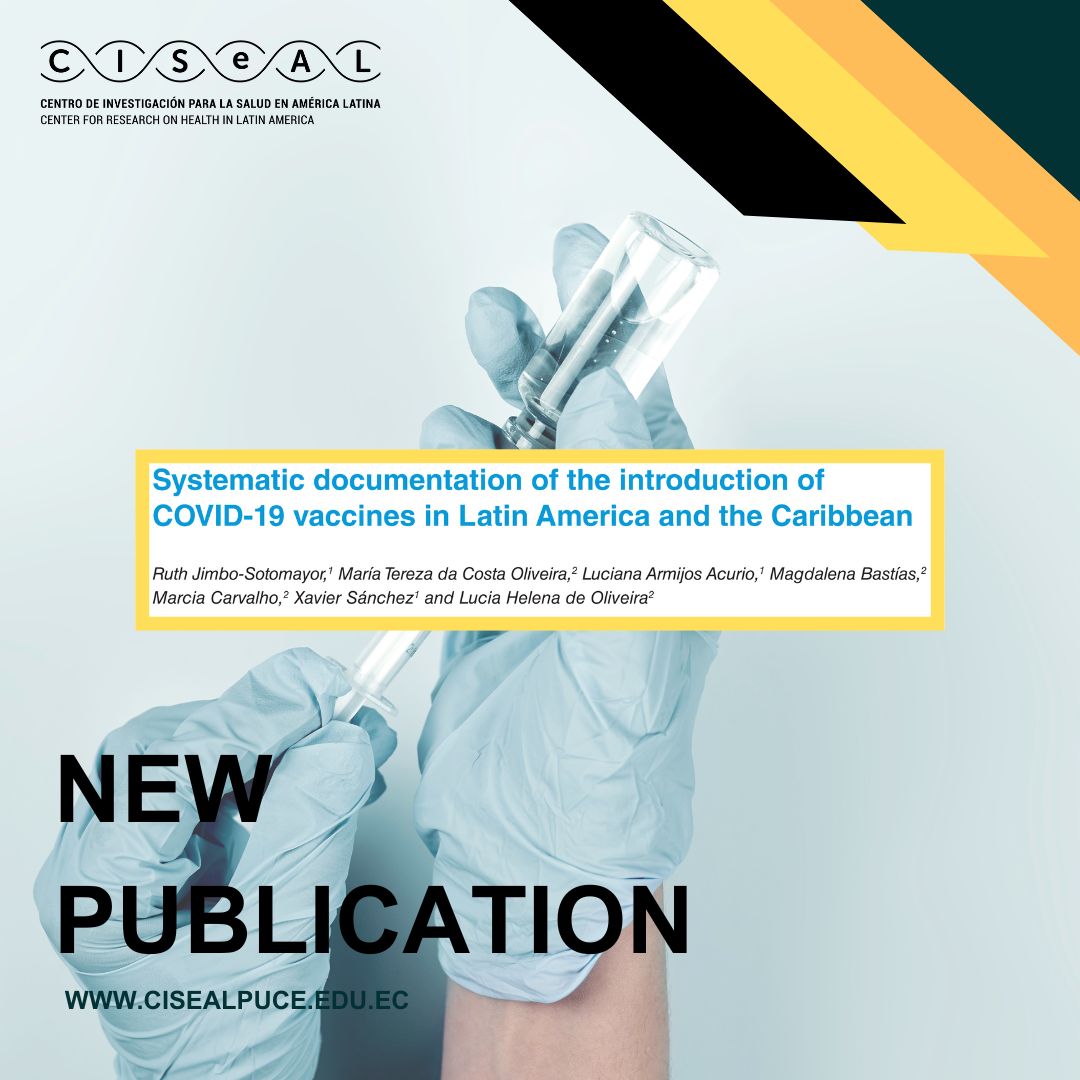 Our CISeAL investigators, Dr. Ruth Jimbo-Sotomayor and Dr. Xavier Sanchez, led a comprehensive study documenting the process of introducing COVID-19 vaccines in selected countries in Latin America and the Caribbean. The research was conducted during the period from December 2021 to September 2022.
Our CISeAL investigators, Dr. Ruth Jimbo-Sotomayor and Dr. Xavier Sanchez, led a comprehensive study documenting the process of introducing COVID-19 vaccines in selected countries in Latin America and the Caribbean. The research was conducted during the period from December 2021 to September 2022.
For this descriptive study, a systematic evaluation of the vaccine introduction process was conducted in Argentina, Belize, Brazil, Costa Rica, Panama and Peru. Data were collected through questionnaires distributed to key stakeholders in each country. Six informants from each of the countries included in the study participated.
The results revealed a number of strengths and challenges in COVID-19 vaccination programs in the region. Among the strengths identified were the commitment of health personnel, evidence-based decision making, the development of vaccine introduction plans, and the participation of national immunization technical advisory groups. However, important challenges were also identified, such as the actions of anti-vaccine groups, problems with electronic immunization registries, vaccine shortages and delays in vaccine delivery, and lack of health personnel at the local level.
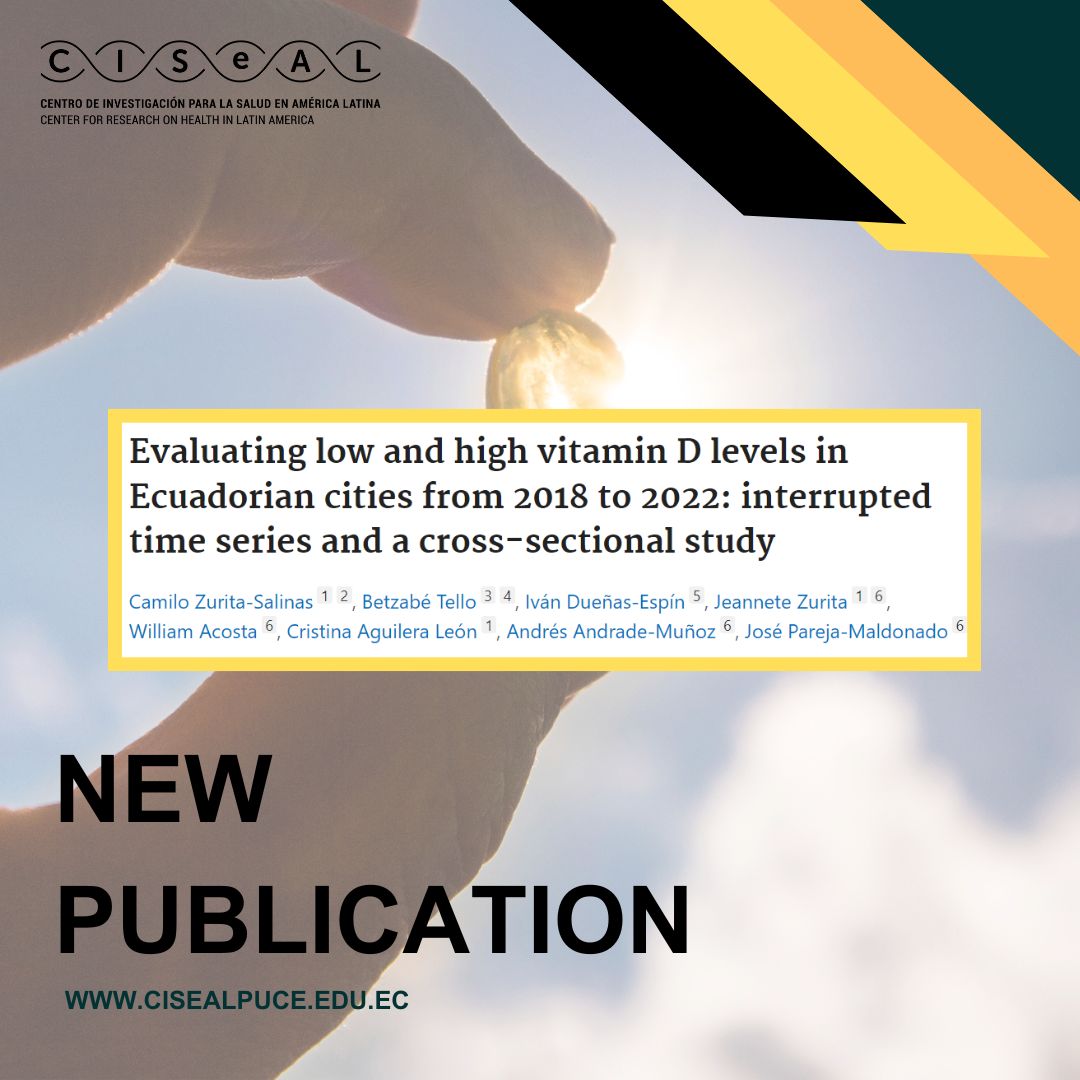 Our CISeAL Investigator Associate, Dr. Betzabé Tello was part of a study that evaluated vitamin D levels in several Ecuadorian cities between 2018 and 2022. The study included 9285 participants whose 25-hydroxyvitamin D (25(OH)D) levels were analyzed in a private laboratory in Quito. A combined interrupted time series design and retrospective cross-sectional approach was used to identify differences in vitamin D concentrations and their relationship to the pre-pandemic and pandemic periods.
Our CISeAL Investigator Associate, Dr. Betzabé Tello was part of a study that evaluated vitamin D levels in several Ecuadorian cities between 2018 and 2022. The study included 9285 participants whose 25-hydroxyvitamin D (25(OH)D) levels were analyzed in a private laboratory in Quito. A combined interrupted time series design and retrospective cross-sectional approach was used to identify differences in vitamin D concentrations and their relationship to the pre-pandemic and pandemic periods.
The results revealed a mean 25(OH)D of 27.53 ng/mL, with a significant prevalence of vitamin D deficiency, as approximately 68.8% of participants had serum levels below 30 ng/mL. In addition, 0.6% of participants were found to have potentially harmful 25(OH)D levels, with levels greater than 100 ng/mL.

In her study entitled “The effect of physical barriers under an elevated house on mosquito entry: an experimental study in rural Gambia”, our CISeAL principal investigator, Majo Carrasco-Tenezaca, examined the impact of physical barriers on the entry of Anopheles gambiae and Mansonia mosquitoes, the main vectors of malaria. In four inhabited experimental huts located in rural Gambia, each elevated 2 meters above the ground, nocturnal collections of mosquitoes were carried out using light traps. Temperature and carbon dioxide levels were monitored inside and outside the huts, and different physical barrier treatments were applied and alternated every four nights. The experiment was conducted over 32 nights, measuring mosquito numbers and temperature in each hut.
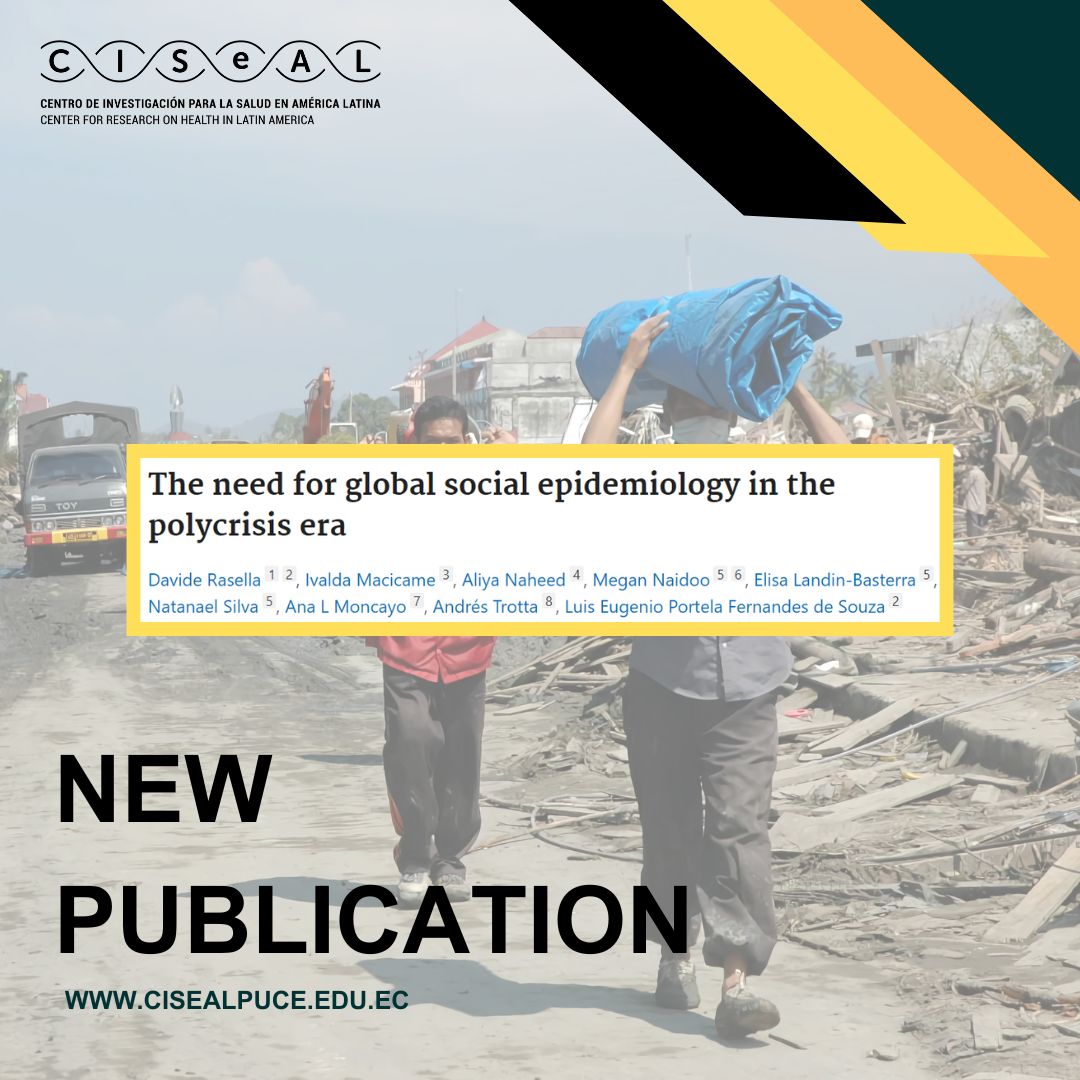 In her recent contribution to “The need for global social epidemiology in the polycrisis era”, our CISeAL Principal Investigator Ana Lucía Moncayo explains how the accumulation of several global crises, such as the COVID-19 pandemic, international conflicts, economic instability and climate change, has created an era of polycrisis. These events are not only simultaneous, but interact and amplify their effects on a global scale, disproportionately affecting the most vulnerable populations and exacerbating poverty and inequality worldwide.
In her recent contribution to “The need for global social epidemiology in the polycrisis era”, our CISeAL Principal Investigator Ana Lucía Moncayo explains how the accumulation of several global crises, such as the COVID-19 pandemic, international conflicts, economic instability and climate change, has created an era of polycrisis. These events are not only simultaneous, but interact and amplify their effects on a global scale, disproportionately affecting the most vulnerable populations and exacerbating poverty and inequality worldwide.
From a public health perspective, it highlights how the era of polycrisis has led to a dramatic decline in the social determinants of health (SDOH), dramatically increasing morbidity and mortality among the poorest and widening health disparities.
In this context, social epidemiology, which has traditionally generated a wealth of evidence on how social vulnerabilities and inequalities influence various diseases and health conditions, focuses mainly on descriptive studies in high-income countries.
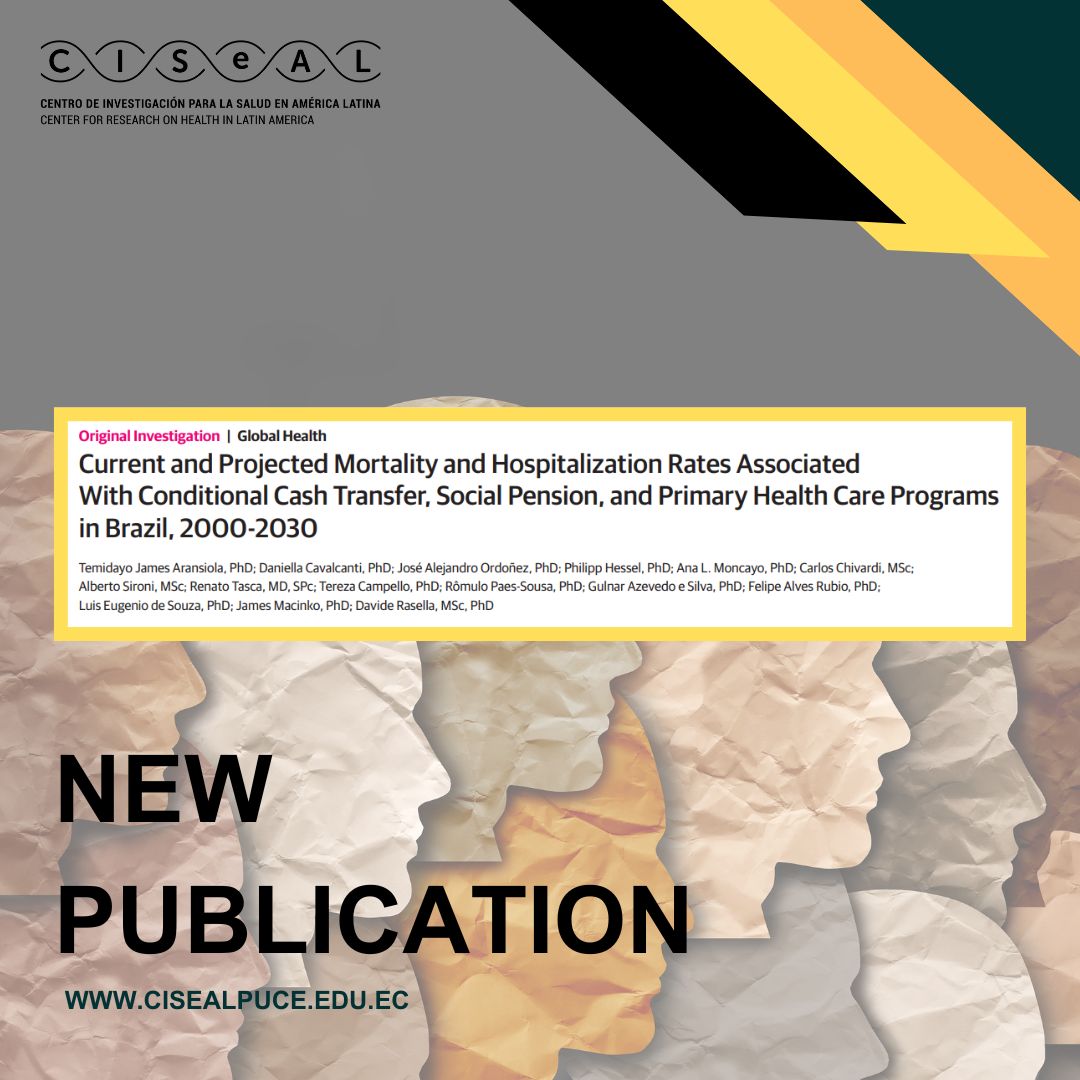 In her latest article, CISeAL researcher Ana Lucia Moncayo makes an essential contribution to research into the effects of social programs on public health in Brazil. Ana Lucia and her team study the impact of conditional cash transfer programs, social pensions and primary health care on mortality and hospitalization rates in Brazil between 2000 and 2030.
In her latest article, CISeAL researcher Ana Lucia Moncayo makes an essential contribution to research into the effects of social programs on public health in Brazil. Ana Lucia and her team study the impact of conditional cash transfer programs, social pensions and primary health care on mortality and hospitalization rates in Brazil between 2000 and 2030.
Using a longitudinal ecological model with multivariate negative binomial regression models, the study integrated a retrospective analysis from 2000 to 2019 with dynamic microsimulation models to forecast possible infant mortality scenarios to 2030.
Results revealed that consolidated coverage of the programs studied was associated with reductions in overall mortality and hospitalization rates. Specifically, these programs are estimated to have prevented around 1,462,626 deaths over the period 2004-2019. Furthermore, it is predicted that a mitigation strategy that increases coverage of these programs could prevent 1,305,359 deaths and 6,593,224 hospitalizations through to 2030, compared to budget austerity scenarios that would reduce coverage of these interventions.
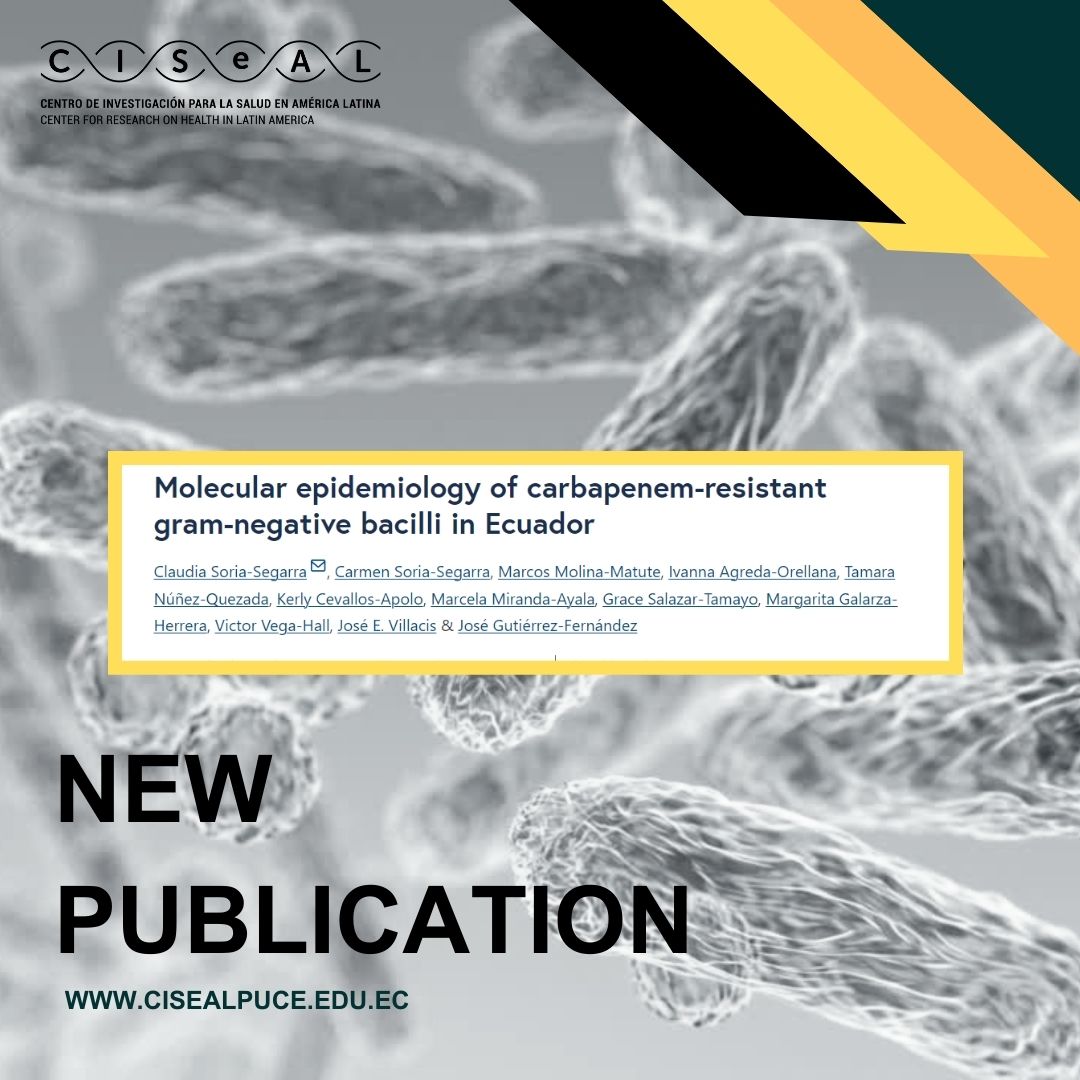 We are pleased to share the results of a study in which our CISeAL Research Associate José Villacís took part, which sheds light on the molecular epidemiology of carbapenem-resistant gram-negative bacilli in Ecuador. This study arises in response to the growing global concern about antimicrobial resistance and its impact on public health.
We are pleased to share the results of a study in which our CISeAL Research Associate José Villacís took part, which sheds light on the molecular epidemiology of carbapenem-resistant gram-negative bacilli in Ecuador. This study arises in response to the growing global concern about antimicrobial resistance and its impact on public health.
During the study, 95 clinical isolates of carbapenem-resistant gram-negative bacilli were collected from six Ecuadorian hospitals. A high prevalence of carbapenemase production was observed in 96.84% of the isolates. The blaKPC, blaNDM and blaOXA-48 genes predominated in Enterobacterales, with blaKPC being the most prevalent. On the other hand, the blaVIM gene was detected in Pseudomonas aeruginosa, while blaOXA-24/40 was the most common in Acinetobacter baumannii.
Most isolates showed co-resistance to aminoglycosides, fluoroquinolones and trimethoprim/sulfamethoxazole. However, both ceftazidime/avibactam and meropenem/vaborbactam demonstrated activity against carbapenem-resistant gram-negative bacilli that produce serine-carbapenemases.



